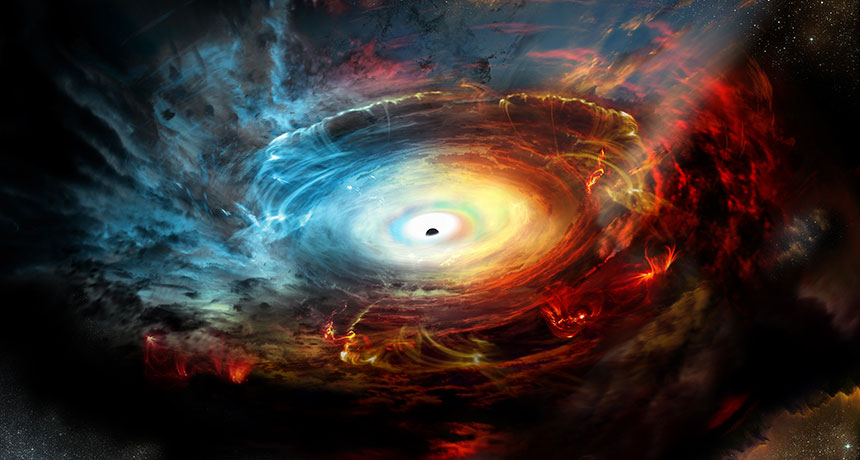Event Horizon Telescope to try to capture images of elusive black hole edge

FIRST LOOK Scientists are hoping to peer into the region surrounding a black hole, illustrated here, with the Event Horizon Telescope, which begins taking data April 5.
NRAO/AUI/NSF




